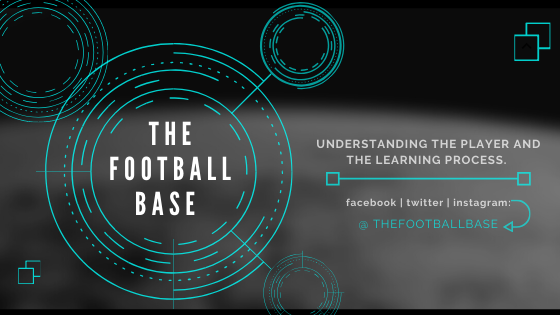The Session Plan Provider: How to build sessions and what to include in your training plans.
- footballbase20
- Aug 28, 2022
- 6 min read
Updated: Aug 30, 2022
Coaching Behaviors
When coaching your sessions try and think about your coaching behaviors and coaching methodology. It’s important to recognize the style of your delivery and how it may impact your players. When delivering, I like to focus on an approach which allows for:
Trial and error
Question and answer
Observe and feedback
Show and tell
Self discovery
Coach facilitate
Player led

When delivering a session some possible scenarios could include:
Allowing the player to experiment during sessions in order to allow self-discovery of skills and understanding.
The coach using questioning techniques in an attempt to guide players to come up with different ways to solve problems and come up with solutions.
Coach observes players during the sessions, player and coach gives feedback based on the activity.
Coach uses this method when showing a player the best option to solve a problem to achieve success.
Coach will set a team or individual challenge, players will identify problems and come up with solutions.
Another key behavior may be the use of questioning techniques and challenges. For example, a coach may use questioning techniques to help with athletes coming up with their own solutions. It can also be used as a player management technique to get the attention of players and to redirect it towards you. Players will also feel a sense of autonomy within the session and therefore will have more connection towards the coach and session. Some examples of a way that you could start a question could be:
Can you?
Try to?
What happens if?
Show me?
Possible question outcome could be:
Get the player to focus on the specific outcome of the questions, leaving them in no doubt that this is their challenge or focus.
A challenge or question that you may impose on the player an may go back later in the session to find out the answer or reflect.
A player may have the knowledge but are they able to apply this knowledge in a game situation?
An example of some questioning techniques may include:
Can you receive the ball and play on as few touches as possible?
Can you try to control the ball by keeping it close to you at all times?
What happens to the speed of the game when you play in less touches?
Show me how you can win the ball back and create an attack?
Warm Up
The warm up part of the session is extremely important to set the standard for the rest of the session. Not only setting the standard, but making sure players are physically and mentally ready to perform for the session. A good warm up, will set the scene and get everybody ready to perform, so make it engaging! Some key points to consider when designing a warm up are:
Lots of touches of the ball
Games that involve changes of direction (tagging games)
First part of the session, so make it enthusiastic and engaging
More emphasis on activity than coaching points to allow activity flow
Try and make warm-ups game specific with dynamic movements (movements and actions replicable to the game)
Set the standard from the first part of the session
Session Example


Main Practice
The main practice is really the part where you want to bring your focus of the session through. Encourage players to reflect on the key theme and always push for that within your session. Whilst you can still explore other themes and key outcomes of the session if they come up, try and focus on the key parts you had planned for, although do not be afraid to deviate from the plan if parts are not going to plan.
Focus on a particular theme (think what do you want to achieve in the session for the players and how are you going to entice this whitening your session).
Can you focus on a practice that can be adapted (doesn’t require a specific number)?
Can you think of sessions that allow as much engagement as possible. For example instead of a drill that has 5/6 people waiting in a line, you can get the same outcomes if the game was dynamic and everyone was moving and players will benefit from this with increased touches, decision making and repetition (target games with less standing).
Session Example


If you find yourself having a few players in lines can you think of ways to increase the intensity? For example, make the pitch smaller or by making it a competition or by simply being ready to throw a second ball in when it leaves the pitch.
If we can make sure practices have an element of decision making involved and make it as similar to a game as possible (instead of line based drills push towards more free flowing game).
Can we include a target? Have a purpose to the drill, for example can we add a goal at the end? Players love scoring goals!
Can you provide positive coaching behaviors by giving praise when appropriate?
Make sure progressions are theme specific, for example if you are working on defending, make it harder for the defending team (take defender away or overloaded).

Make sure that you are identifying if players are struggling, coping or striving in the practice, which you can then adapt to suit individual needs.
Every player is an individual project therefore, don’t assume one player will develop in the same way and at the same rate.
Know when to move the practice on and the next phase of practice by recognizing the key outcomes you want to achieve.
Look at different outcomes of the session, for example what are the physical (body), tactical (game), technical (ball), mental (mind) and social (person) parameters you want to include or achieve?
Use trigger words in your session so you’re not overcoaching, Can you get in and out of the practice quickly to reinforce the coaching point.
Give players autonomy and give them responsibility in the session to build character.

1v1s and Overload Games
This aspect of the session is a great to develop players skills and attributes by forcing game based scenarios. The game is chaotic and broken down into small segments, therefore if you can get your players to dominate in 1v1s, they will pose a significant positive trait with and without the ball.
These drills are great to develop game based situations, but can you create purpose to the 1v1/2v2/3v3 and relate it to the bigger picture, for example what does that look like to you in your position and the bigger picture of the game?
Develop a technical toolbox (skill moves). that can be delivered In the warm up (and at home) which they feel comfortable performing in game situations.
Think about distances of the area. If you are looking for players to be direct or for physical contacts make the pitch smaller for example.
Instead of delivering a numbers game based practice, can you adapt so that you can use small sided games to build your session. For example, adding a condition where players have to run around the goal if they score (creation of overloads) to force fast and effective decision-making. Another example could be by having a target player in the middle of the goal where players aim to pass through to the target (combination) before scoring (looks at movement off the ball, combinations or third man runs).
Session Example


Games
I always like to give players a lot of opportunity and choice in the session and give them the autonomy to self discover, so make sure sessions are providing that.
Can we provide players opportunity to play as close to the game as possible?
Think about your numbers and the area that you have, try not to condense the game with having too many players or dropping intensity by having it too large.
Can we afford opportunities for more touches, more decisions and more engagement? This could be, breaking the game into small 3v3 or 4v4s.
Encourage players to be creative in the game and explore through self-discovery (bring what they have learned in to action).
Develop competitiveness within your players but remind them of the bigger pitch (focus on the process).
Coach in the game, step in and develop key coaching points to game play.
Always have footballs ready in the goal for fast play.
Provide them different scenarios and what ifs?
Key questioning techniques to help players build their own solutions.
Add conditions into the game that may bring out your theme.
Create different tournaments for players for example promotion relegations small sided games or Dutch Vision (see tournaments sections).
Can you add individual and team challenges (see below) into the game to redirect players focus?
Session Example


For example, a team challenge may be:
Can you play quickly with your teammates to score within 10 seconds of winning the ball back?
Every pass made before scoring a goal is the amount of goals for that team.
Can everyone in your team score to win the game? This could help with movement with strikers dropping short to receive the ball and link up, or simply defenders or midfielders pushing on.
An Individual challenge may be:
Can you beat your direct opponent and score, being worth 2 points?
If you score with a first touch or non-preferred foot it is worth two goals.
Can you scan your shoulder before receiving the ball?
You can download our Player Challenge Cards below!
Depending on your session numbers you can either create a small sided game or conditioned games. Make sure you have lots of adaptations in place for games that can be changed if things aren’t working or if it is finding to be too easy for the players.















Comments